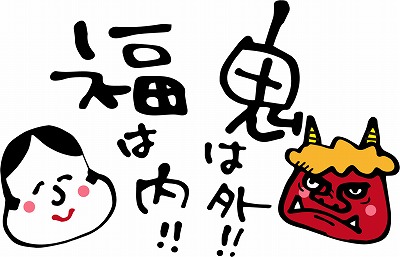 |
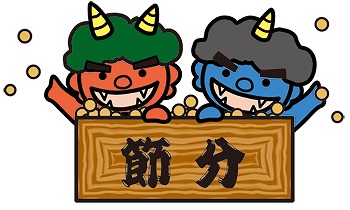 |
| ●先生のワンポイントレッスン 同じ「投げる」という言葉でも、3通りあることを先生から教えてもらいました。 throw 何か的に向かって投げる、投げつける toss 軽く投げる、ひょいと軽く投げる scatter まき散らす、ばらまく 豆まきの場合は鬼に向かって投げるので throw ですね。 |
|
| My favorite season event is "The Bean Throwing Ceremony called "Setubin"on February 3rd. |
|
| 私の一番好きな季節の行事は2月3日の”節分”の豆まきです。 | |
| Setubun literally means, "The day between two seasons", 4 times
a year, but now we Japanese call only the division of winter and spring. |
|
| 節分は文字通りだと、「2つの季節を分ける間の日」を意味しますから1年間に4回ありますが、 現在では我々日本人は冬と春の分かれ目だけを節分と呼んでいます。 |
|
division(ディヴィージョン)区分、分かれ目、割り算 divide (into) 分ける、分割する The coach divided the players into ywo teams. コーチは選手を2つのチームに分けた 15÷5=3 は 15 divided by 5 is 3 . |
|
| People do Setubun on February 3rd, the day before "The first spring
day" on the present solar calendar. |
|
| 人々は立春の前日、現在の太陽暦のカレンダーで、2月3日に節分を行います。 | |
| You may think it's far away from the beginning of spring, that's because Setubin is from the old lunar calendar. |
|
| 春の始まりには、ほど遠いと思われるかもしれませんが、節分は旧暦の太陰暦からきているからなのです。 | |
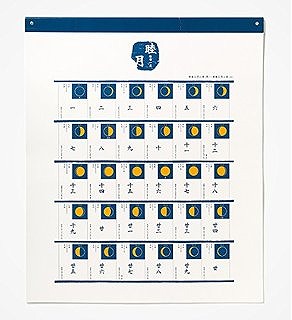 |
|
| Bean throwing, called "Mame-maki"is done at home on the night of Setubun. | |
| 節分の日の夜には、”豆まき”が家庭で行われます。 | |
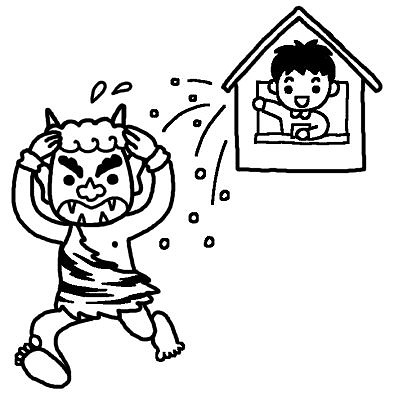 |
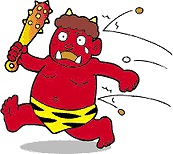 |
| Mame means bean, maki means throwing. | |
| マメは豆、マキは撒くことを意味します。 | |
| People throw the roasted soy beans to inside and outside of their house shouting "Demon out ! Fortune in !" |
|
| 人々は家の中と外に向かって、「鬼は〜外! 福は〜内」と叫びながら、炒った大豆を撒きます。 | |
fortune =good luck 幸運、運命、運勢 |
|
| Toshiotoko or Toshionna throws beans at demon, and another family members act as demons called "Oni." |
|
| 年男、または年女が鬼めがけて豆を撒き、他の家族は鬼に扮します。 | |
throw 〜at … 〜を…めがけて投げる |
|
| What's Toshiotoko and Toshionna ? | |
| 年男と年女とは何でしょうか? | |
| In Japan, each year is represented by 12 different animal, according to the Chinese zodiac. |
|
| 日本ではそれぞれの年が1年ごとに異なった12の動物で表されていますが、それは十二支から来ています。 | |
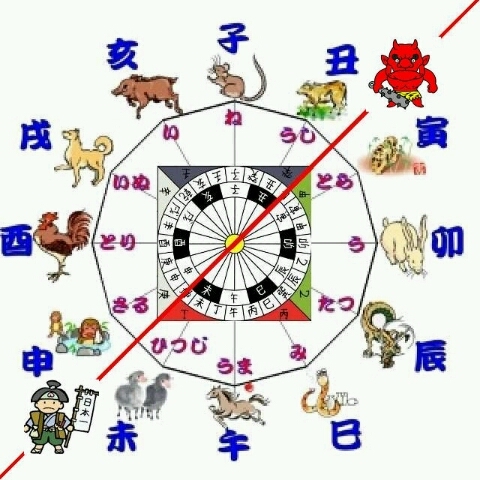 |
|
| For example, this year is the year of the monkey. | |
| 例えば、今年は申(サル)年ですね。 | |
| So this year's Toshiotoko or Toshionna is a man (woman) that he (she) was born in the year of the monkey. |
|
| だから今年の年男と年女は申年生まれということになります。 | |
| They are 0, 12, 24, 36, 48, 60, 72, 84, 96, 108, 120……years old. |
|
| 0歳、12歳、24歳、36歳、48歳、60歳、72歳、84歳、96歳、108歳、120歳…… の人たちが年男と年女です。 |
|
| Anyway, why should we use beans ? | |
| ところでなぜ、豆を使うのでしょうか? | |
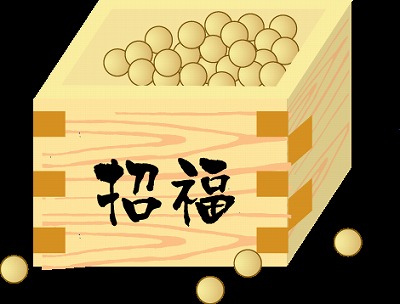 |
|
| Because beans have special power. | |
| なぜならば、豆には特別の力があるからなのです。 | |
| But nowadays, lots of people use shelled peanuts. | |
| でも最近では、多くの人々が殻付きのピーナッツを使います。 | |
| Because shelled peanuts are easy to clean and sanitary than soybeans. | |
| 殻付きのピーナッツは大豆より掃除がしやすく、衛生的だからです。 | |
| I think peanuts don't have special power. | |
| ピーナッツには特別の力がないと、私は思いますが。 | |
| I use roasted beans , but put them in the small bag. | |
| 私は炒った大豆を使いますが、小さな袋に入れて使います。 | |
| After throwing beans, people eat the same number of beans as many as their age for good health. |
|
| 豆まきの後、自分の歳と同じ数の豆を、健康を願って食べます。 | |
| I prepare something for "Mamemaki" every year. | |
| 私は毎年”豆まき”のために、いくつかの準備をします。 | |
| I cut out Red-demon's mask from red paper, Blue-demon's mask from blue paper. |
|
| 赤い紙から赤鬼のお面、青い紙から青鬼のお面を切り抜きます。 |
|
| Then I draw the eyes, nose, ears, mouth, hair, horn on it. | |
| それからそのお面に目と鼻と耳と口と髪と角(つの)を描きます。 | |
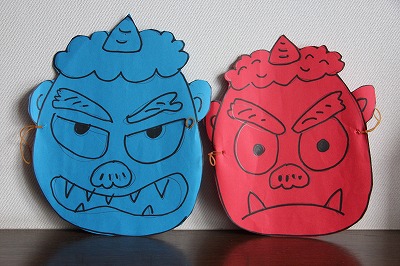 |
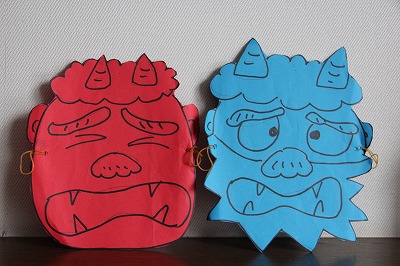 |
| And last I put a rubber band on the mask. It's ready. | |
| そして最後にお面に輪ゴムをつけて出来上がりです。 | |
| Red demon represents all evil, Blue demon does anger, Black demon does doubt, Yellow demon does emotional dependence, and Green demon does arrogance. |
|
| 赤鬼は全ての悪、青鬼は怒り、黒鬼は疑う心、黄鬼は甘え、そして緑鬼はおごりを表しています。 | |
| Then, why do demons wear striped(yellow and black)loincloth called fundoshi and have ox horn? |
|
| それではなぜ、鬼は黄色と黒色の縞模様の褌(ふんどし)をはき、牛の角が生えているのでしょうか? | |
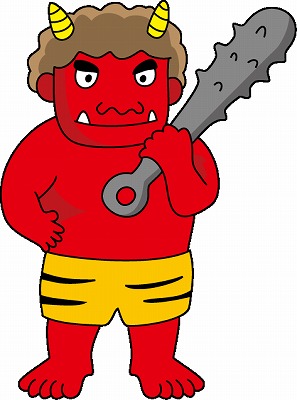 |
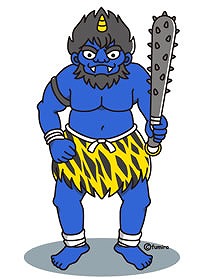 |
| Because demon enters the house from north east called "Kimon". | |
| なぜならば、鬼は”鬼門”と呼ばれる北東の方角から入ってくるからです。 | |
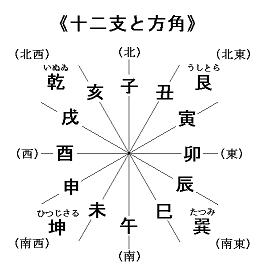 |
|
| North east is ox and tiger according to the Chinese zodiac. | |
| 北東は十二支で、丑(うし)と寅(とら)なのです。 | |
| Recently, eating special rolled sushi called "Ehoumaki" at Setubin night is popular in Japan. |
|
| 最近、日本では節分の晩に”恵方巻き”と呼ばれている特別の巻き寿司を食べるのが人気です。 | |
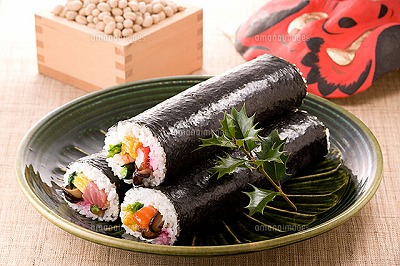 Ehoumaki 恵方巻き |
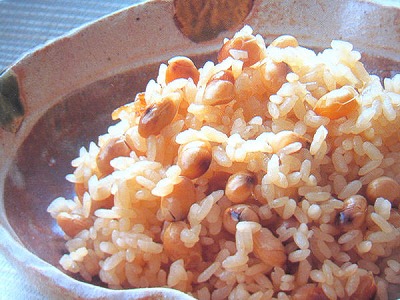 Beans rice 豆ごはん |
| But I don't have it, I have beans rice. | |
| でも私は恵方巻は食べず、豆ご飯を食べます。 | |
| The recipe is simple. | |
| そのレシピは簡単です。 | |
| First roast the washed beans on the flypan for 15 minuites until roasted smell while shaking occasionally. |
|
| まずフライパンで洗った豆を15分間、香ばしい匂いがしてくるまで、たま〜にゆすりながら炒ります。 | |
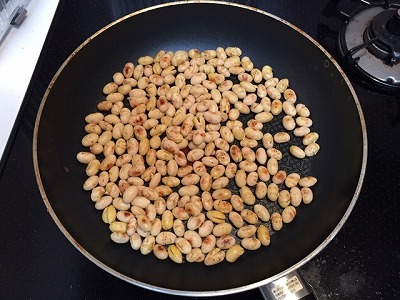 |
|
| Next put the washed rice, water, salt, rice wine(sake), and roasted beans into a rice machine. |
|
| 次に炊飯器に洗ったお米、水、塩、日本酒、そして炒った大豆を入れます。 | |
| And finally switch on. That's all. | |
| 最後にスイッチを入れて、おしまいです。 | |
| "Mamemaki" is done at Shinto-shrine, too. | |
| ”豆まき”は神社でも行われます。 | |
| I've been to The Bean Throwing Celemony at the Oyama-shrine with my third daughter about 20 years ago. |
|
| 私は20年ほど前に、三女と尾山神社へ豆まきに行ったことがあります。 | |
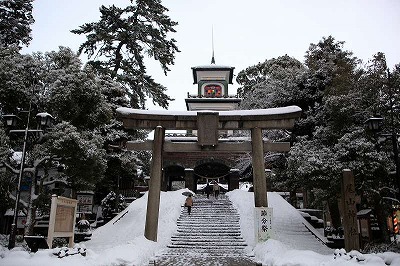 |
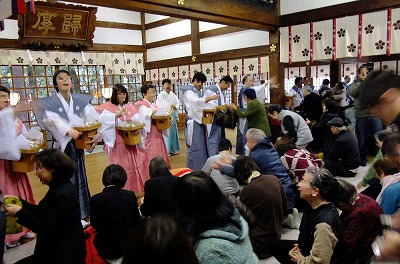 |
| Some Toshiotoko and Toshionna threw the beans and chocolate at us. | |
| 何人かの年男と年女が私達に豆とチョコレートをまきました。 | |
| I was crazy about getting beans and chocolate then. | |
| その時、私は豆とチョコレートをひらうのに夢中でした。 | |
be crazy about 〜 〜に夢中である |
|
| And that evening, my acquaintance phoned me, "When I watched TV news, you were on television. You were crazy about getting beans. Your face was shown in close-up." |
|
| そしてその晩のこと、私の知り合いが電話してきて 「テレビでニュースを見ていたら、あなたがテレビに映っていたよ。 夢中で豆をひろっていたね。アップで映っていたよ。」 |
|
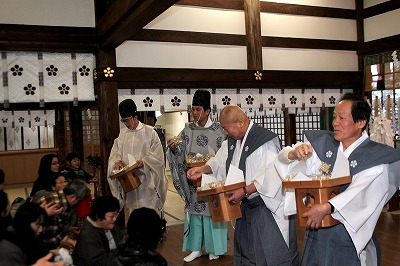 |
 |
| I thought it was terrible ! My face must be just like a demon. |
|
| 私は最悪〜と思いました! 私の顔は鬼のような顔だったに違いありません。 |
|
| I am ashamed of what I have done. | |
| 私は自分のしたことが恥ずかしいです。 | |
| That's all. Thank you. | |
| これで終わります。 | |
| |
|
 |
|
| 2016年1月21日(木) | トップページへ戻る |